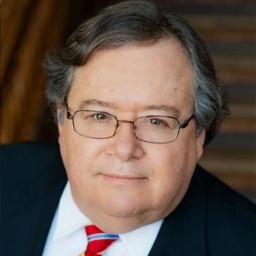2/12/09 — A night in Portland
Last night, I attended the Portland Chartered Financial Analysts Society’s annual economic briefing. First, a couple of compliments — it was very well done. I’m also a regular at Seattle’s annual briefing, and I personally think Portland’s was a bit better organized. Also, they incorporate attendance by students from Portland State University, and I thought that was a nice touch.
Now for the bad news. The two speakers were very well prepared and made well-organized presentations on why the national economy is what it is… and thus where it’s headed. Timothy Duy is a professor at U. Oregon and Director of the Oregon Economic Forum. Russ Koesterich is Managing Director and Head of Investment Strategy at Barclay’s Global Investments.
Two synopses of their talks. First, I would lump both of these guys into the “glass is half empty” school of thought. Fortunate or unfortunate as the case may be, it appears that most economists today are in that category (as opposed to the “glass is half full” group). You can’t blame them — after too many years of overly-rosy forecasts and excuse-making for cracks in the world’s economic foundation, it’s tough to take an optimisic stand. Indeed, its doubtful that anyone will critize an economic forecaster for under-shooting the recovery or being overly cautious in the middle of the recession. However, it’s the “glass-is-half-full” guys and gals who will help construct the visions and structures that will lead us out of this mess.
But, that’s really not the point. The second major theme of both of these presenters was that our national economy has gone through a structural event. By that, they mean that the economy, following a recovery, will look very different in the future than it did in the past. For one, consumption spending (as a portion of GDP) has been trending upward pretty much constantly since the mid-1950’s. That’s not surprising — the mid-1950’s was the middle of the baby-boom birth cohort. Families were exploding in size and number, along with suburbs, shopping centers, and everything we now think of as our “way of life”. Remember, prior to WW-II, a very large number of Americans lived on farms and consumed what they personally grew or sewed. Today — can you personally name anyone who lives on a farm or sews their own clothes?
Commensurate with this, household savings rates have declined steadly for several decades — from about 12% of disposable income in the early 1980’s, to approximately zero for the past couple of years. We’re seeing early signs that the savings rate is trending back up — only time will tell. However, Barclay’s notes that U.S. consumers have started reducing household debt for the first time since WW-II. New home mortgage borrowing on an annualized basis topped $1.2 Trillion in 2005, butis currently very close to zero.
America is still the thousand-pound-gorilla on the world’s economic stage, and our rapid contraction in spending is being felt severely abroad, particularly in Japan and China. There are a whole lot of other factors, but in general Dr. Duy and Mr. Koesterich would suggest that we’ll see continued contraction in the months ahead. Consumer confidence continues to trend downward, and securities markets will remain highly volatile, although not nearly as bad as in 4Q08. Global trade growth has actually gone negative.
The good news — such that there is some — is that early and aggressive action by the U.S. government suggested that we will not see a U.S. repeat of the Japanese experience of the 1990’s, which was marked by a decade of stagnation, deflation, and year-after-year of economic distress. Money markets are starting to thaw again.
No one is projecting inflation for the near-term, and in fact all signs point to the government being focused on preventing deflation. (For the record, deflation is a heck of a lot harder to fix than inflation).
That’s it for now. See you later!



Leave a comment